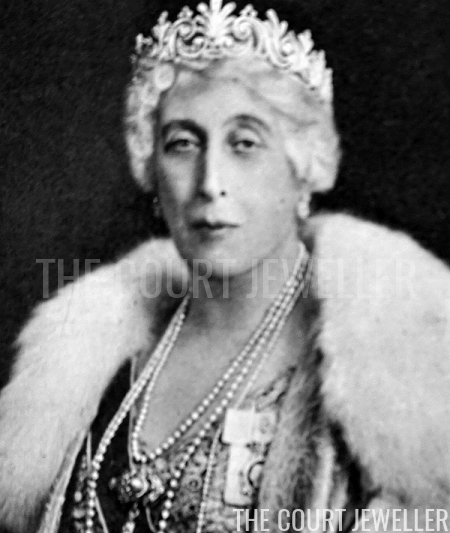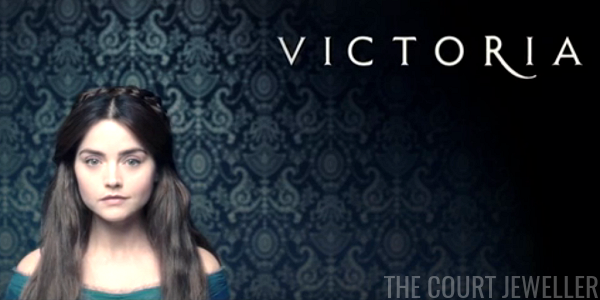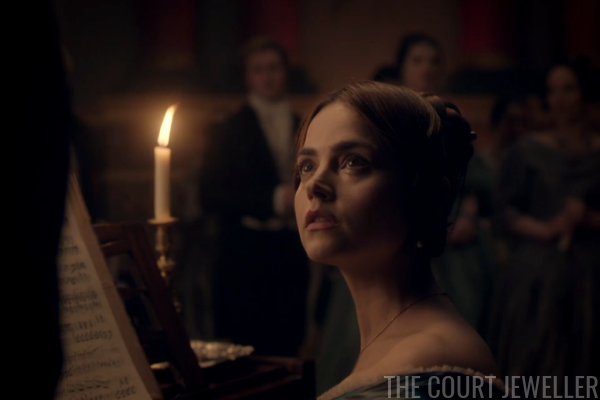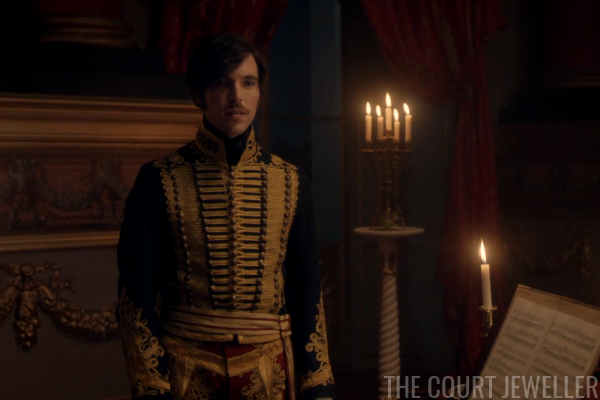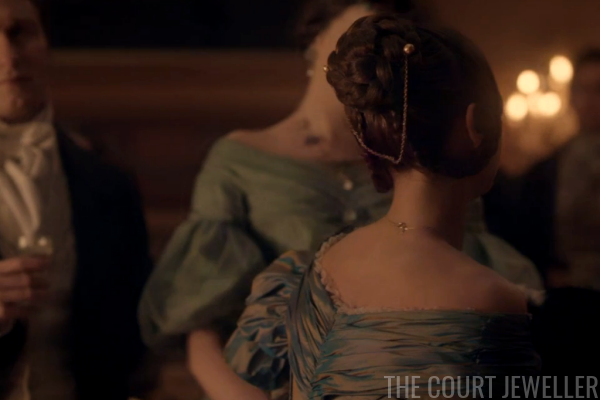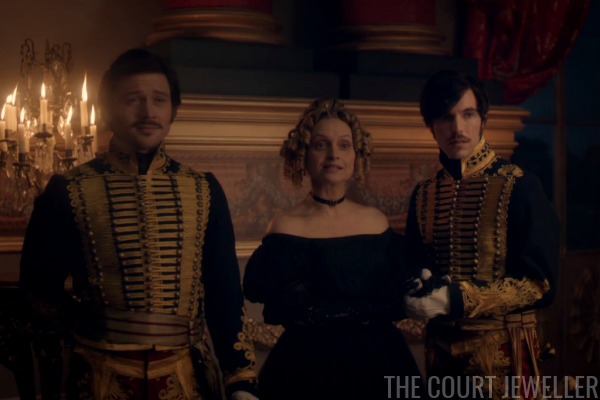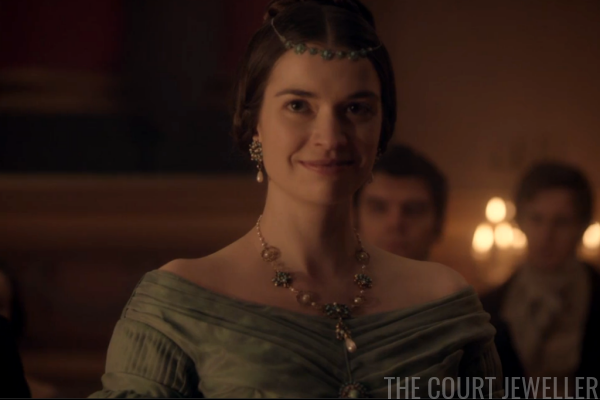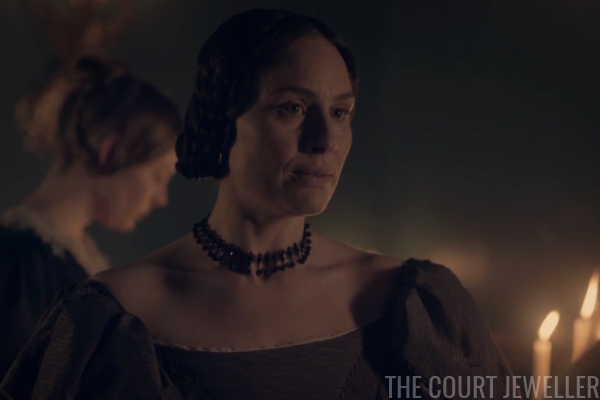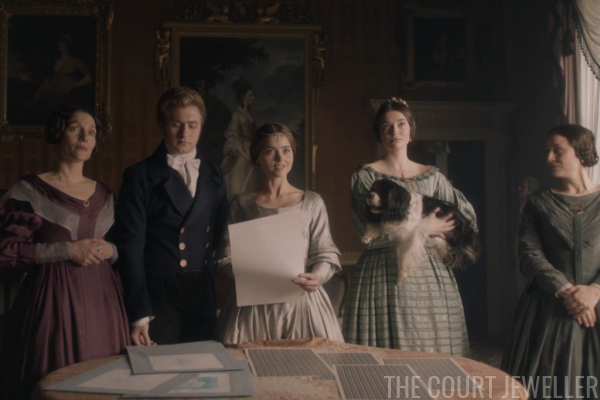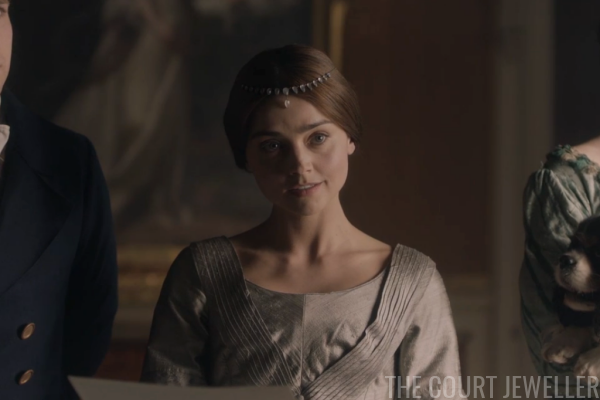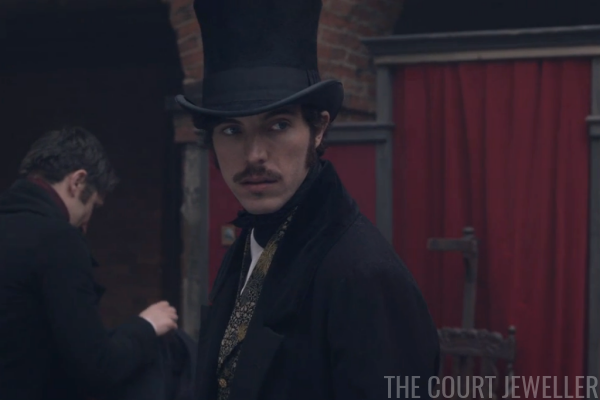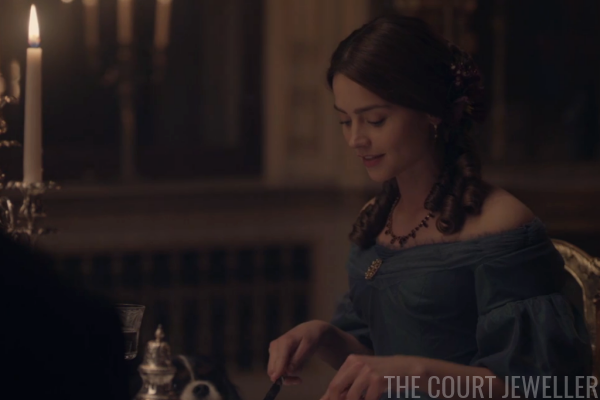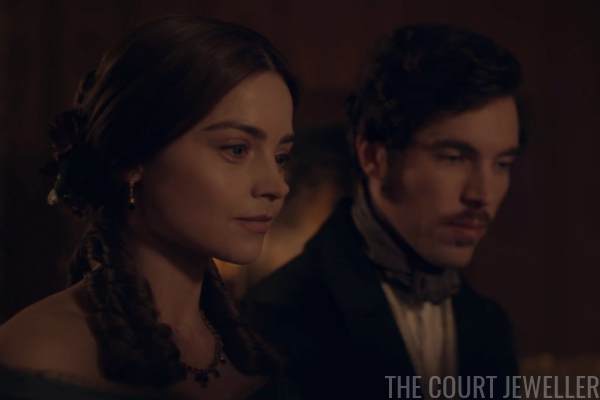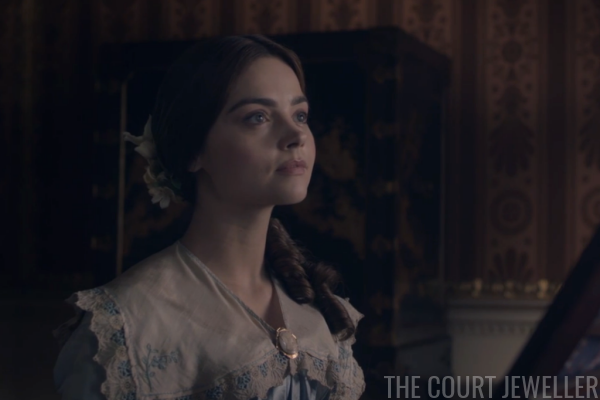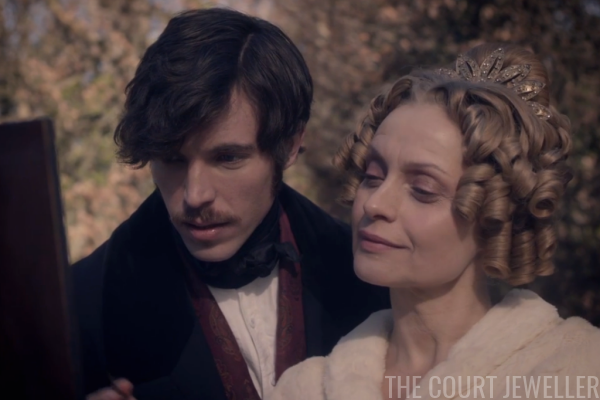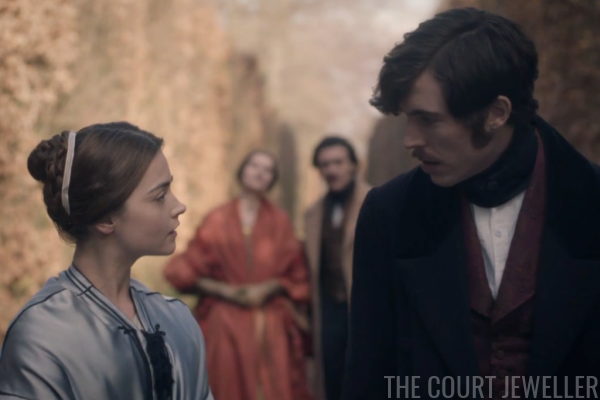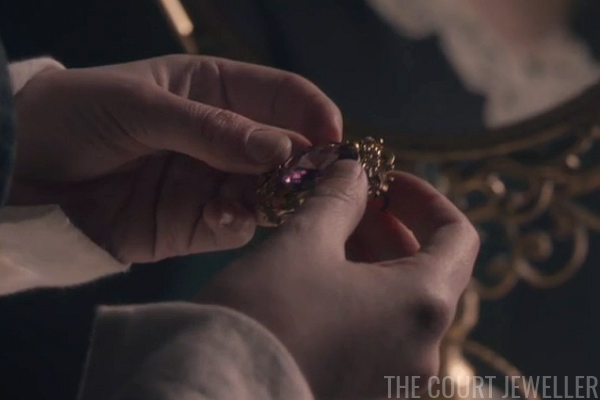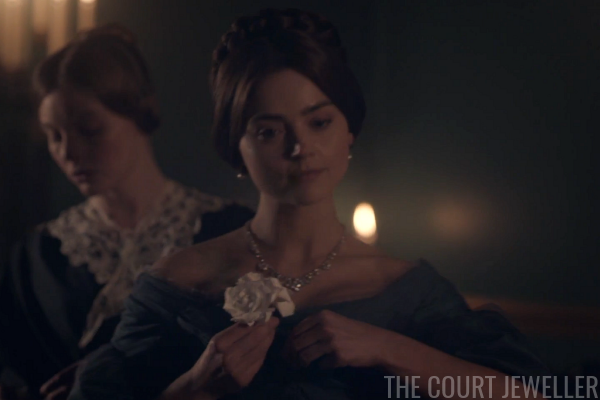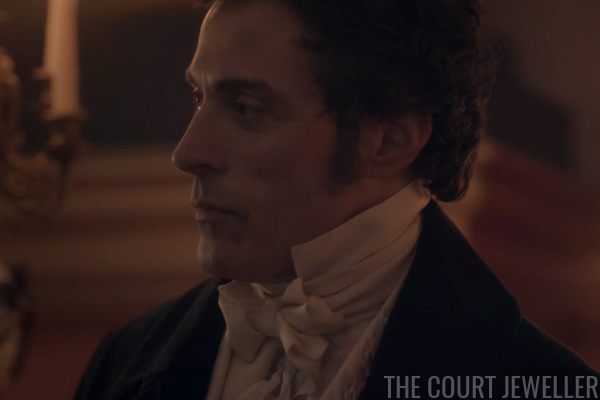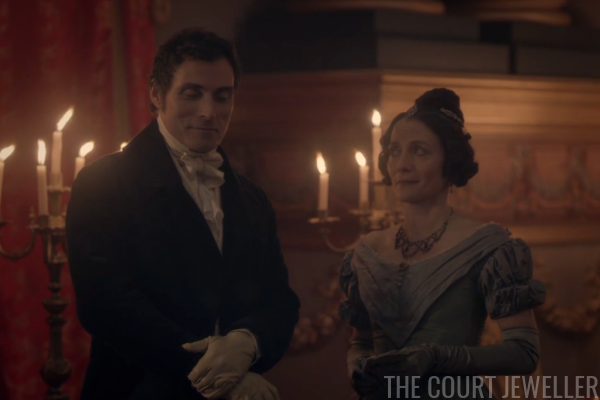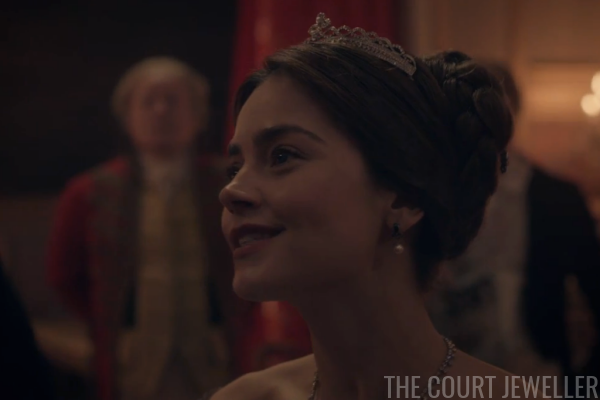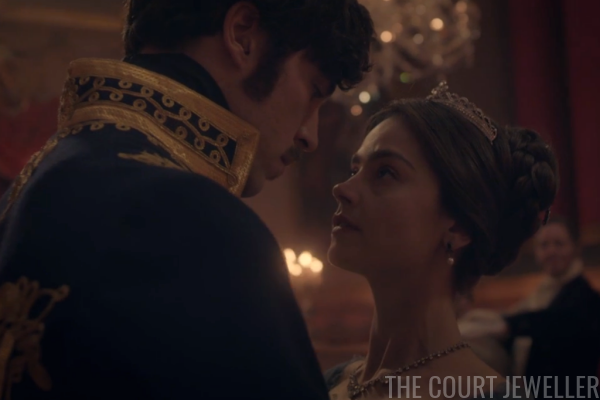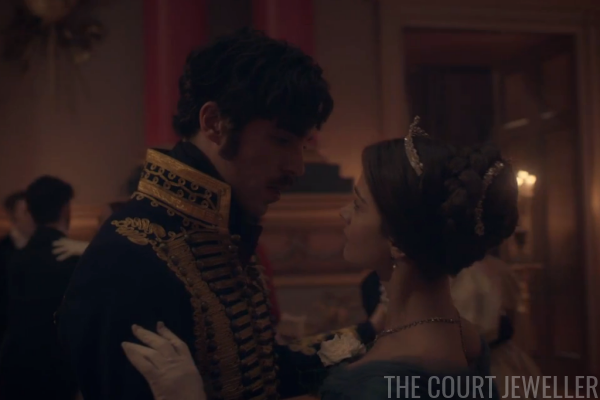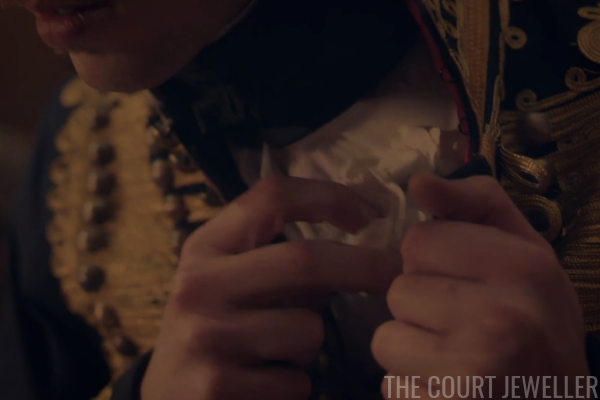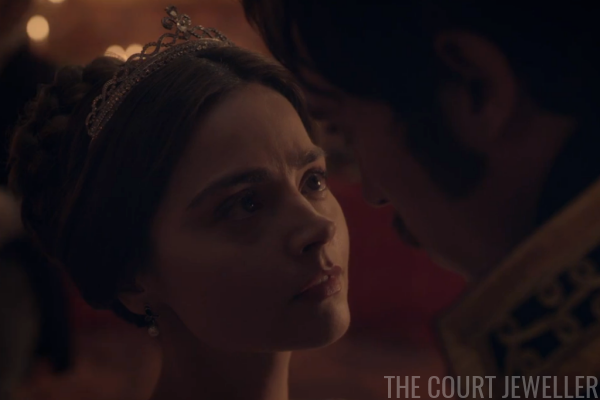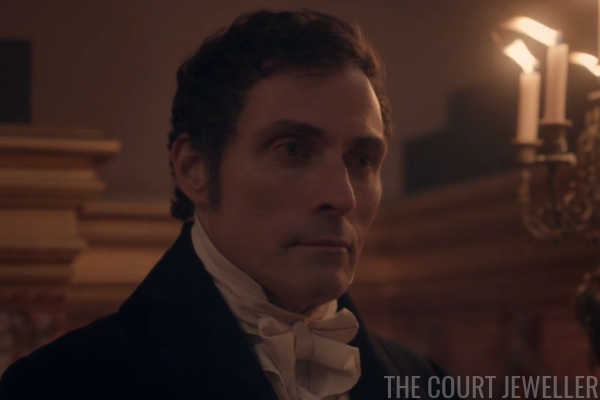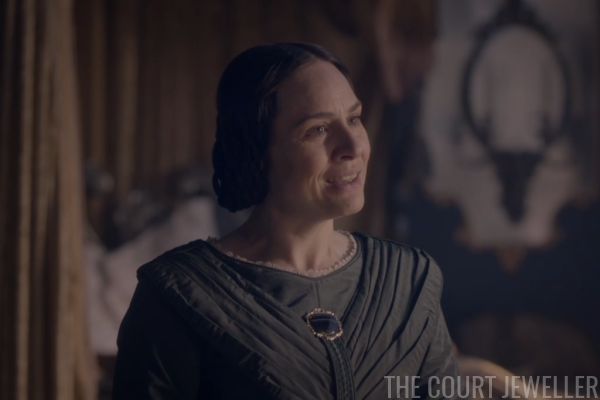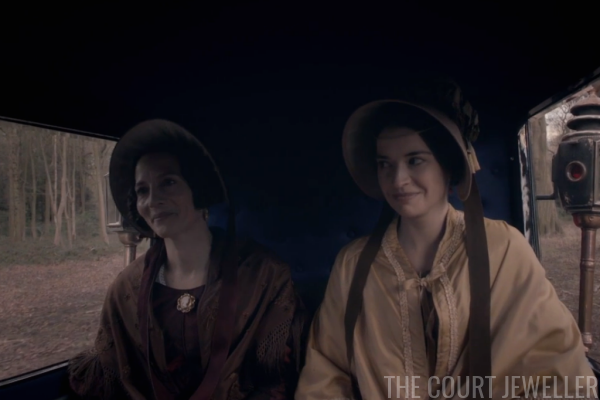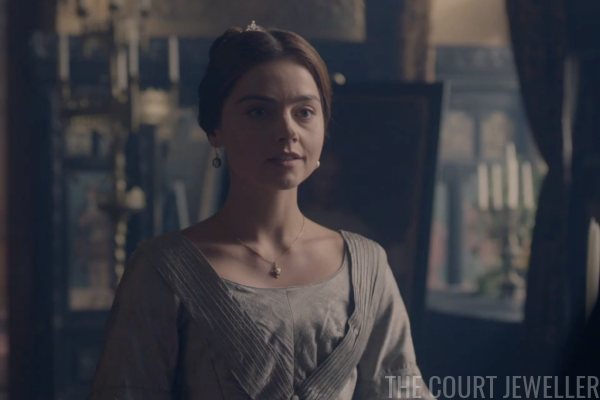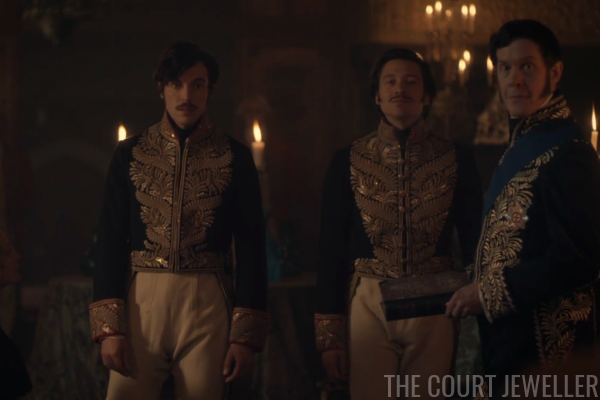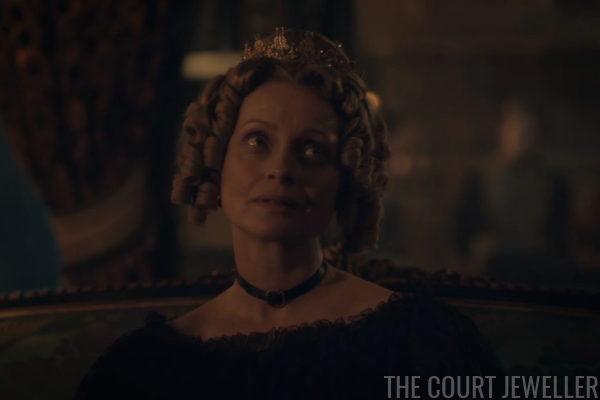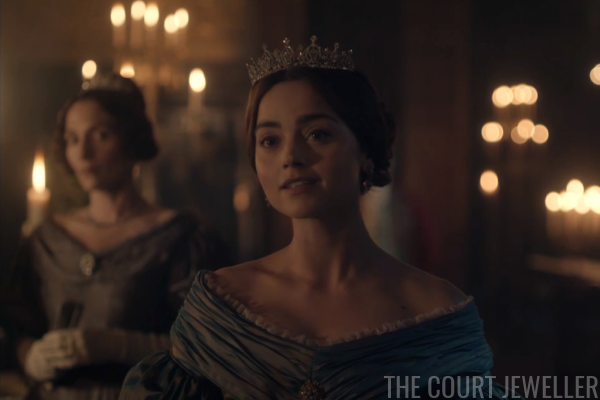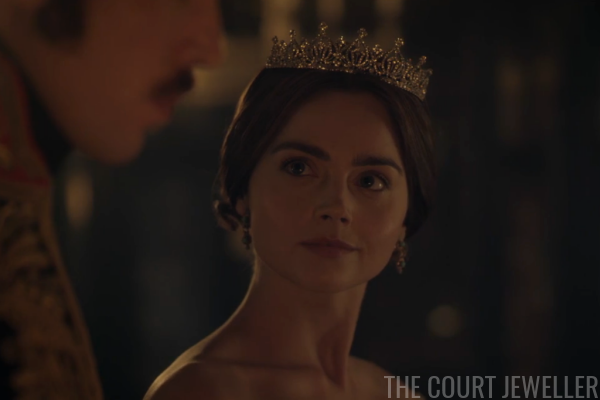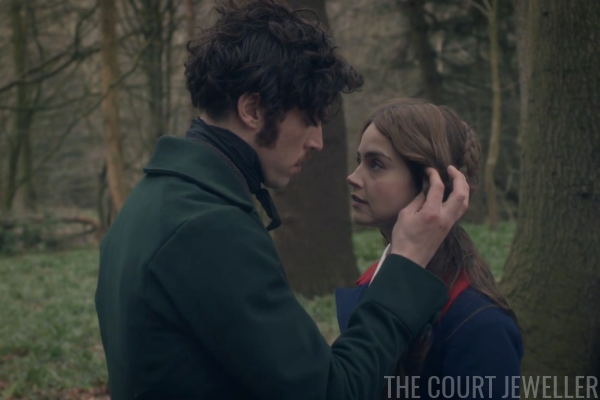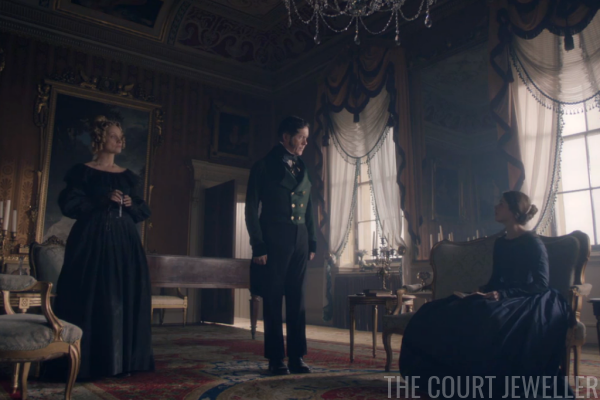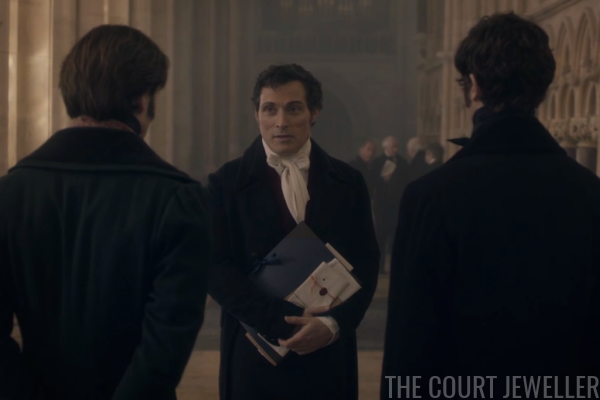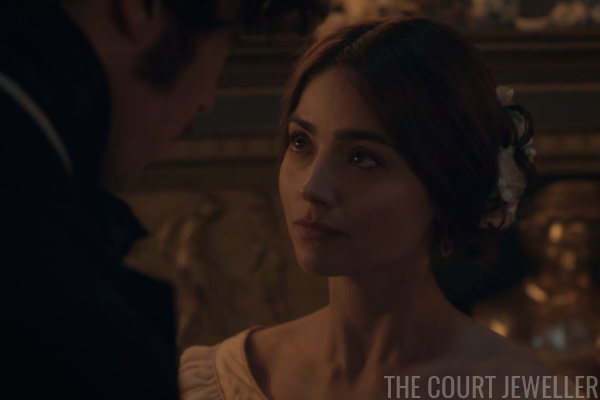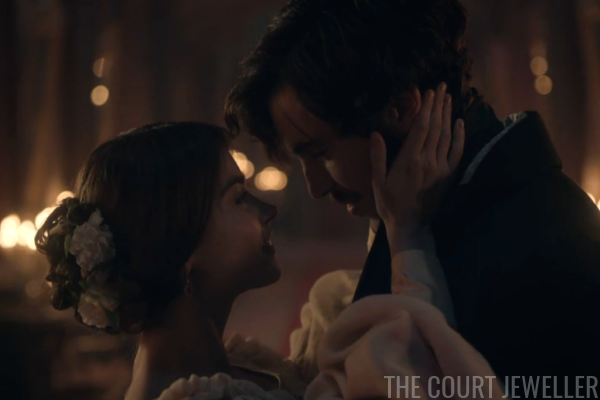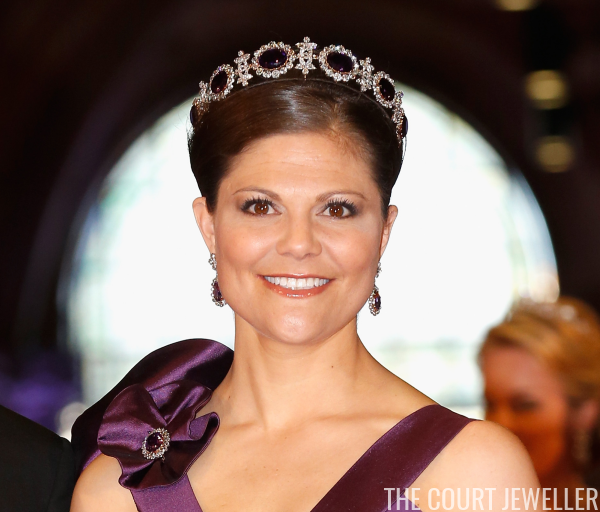 |
| Crown Princess Victoria wears the Napoleonic Amethyst Parure Tiara in Amsterdam in April 2013 (Michel Porro/Getty Images) |
The family that currently sits on the Swedish throne has genealogical ties to Swedish kings from centuries ago, but they’re more immediately descended from French nobility. Because of this, the family’s jewel coffers are full of trinkets with connections to the French imperial court of Napoleon Bonaparte. Today’s tiara, the sparkler from the family’s amethyst parure, is just such a piece.
The tiara actually didn’t start out as a tiara at all; in fact, it’s only been a tiara for a few decades. Instead, the piece was original a necklace made of diamonds surrounding fifteen large amethysts. The demi-parure also included drop earrings, two bracelets, and a devant de corsage. The dark purple amethysts are set in gold, while the diamonds are set in silver. Above, Princess Christina wears the tiara in its original necklace form in 1968.
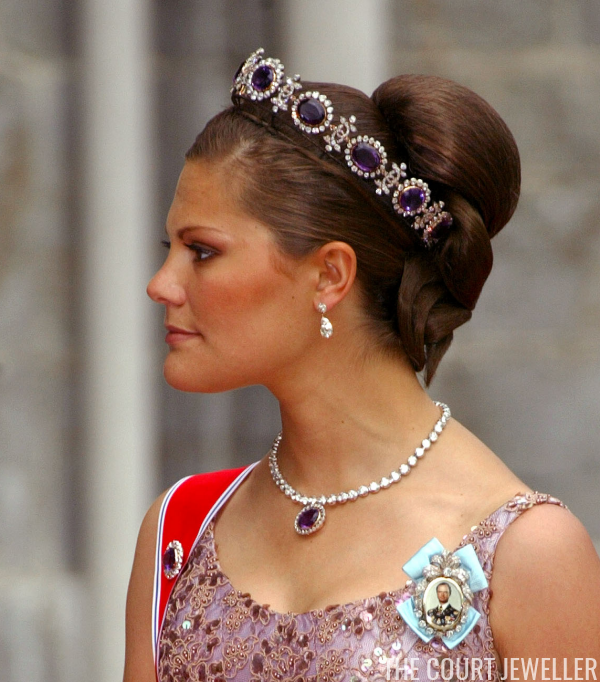 |
| Crown Princess Victoria wears the tiara at the wedding of Princess Martha Louise of Norway (Sion Touhig/Getty Images) |
The original owner of the jewels is said to have been Joséphine de Beauharnais, the first wife of Napoleon Bonaparte. Lots of royal jewels are said to have belonged to the empress, but this suite apparently actually did. Joséphine gave the amethyst parure to her daughter-in-law, Princess Augusta of Bavaria, who had married Eugène de Beauharnais in 1806. (Augusta’s father, King Maximilian I Joseph of Bavaria, later made the couple the Duke and Duchess of Leuchtenberg.) In turn, Augusta passed the suite along to her own daughter, Joséphine of Leuchtenberg, when she married the future King Oscar I of Sweden and Norway in 1823.
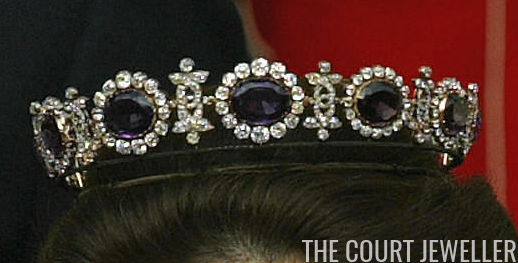 |
| A closer look at the tiara and its frame (SVEN NACKSTRAND/AFP/Getty Images) |
The amethysts have been in the Swedish royal collection ever since; today they are a part of the Bernadotte family jewel foundation, and so they cannot be sold. But it wasn’t until after Silvia Sommerlath married King Carl XVI Gustaf in 1976 that the parure was transformed to its current state. Silvia decided that the amethyst set really needed a tiara, and because the necklace was heavy and difficult to wear in its original state, she chose to have it set on a tiara frame. (One amethyst and diamond element was removed from the necklace in the process, and it’s able to be worn separately as a brooch or a hair ornament.)
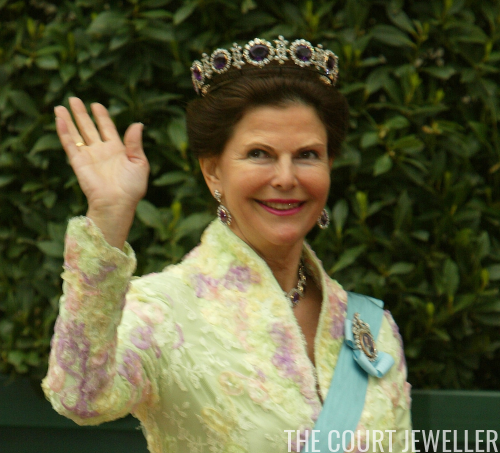 |
| Queen Silvia wears the tiara at the wedding of Crown Prince Frederik of Denmark in 2004 (Pascal Le Segretain/Getty Images) |
Two birds, one stone: the piece became easier to wear, and the parure became a more comprehensive set. Silvia also had the bracelets from the parure altered so that they could be worn together as a single-stranded necklace, with the pendant from the devant de corsage suspended from it. But none of these transformations are permanent. The tiara can be taken off its frame, and the extra amethyst can be reattached, meaning that the set can still take on its original form.
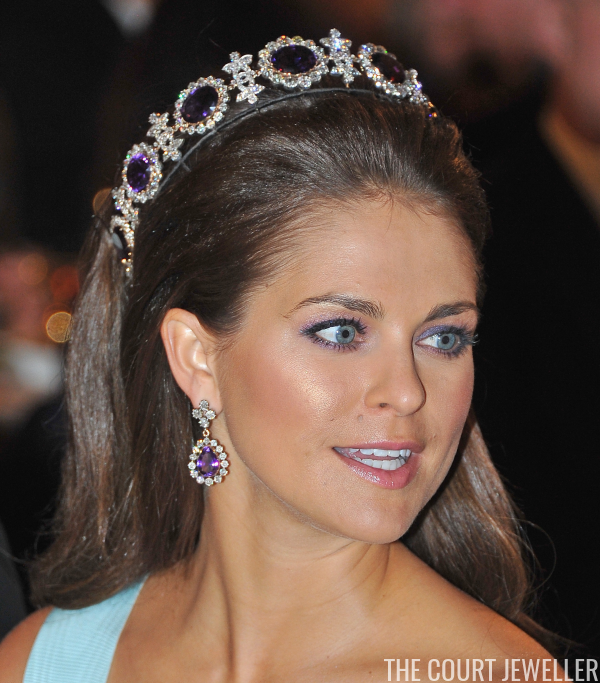 |
| Princess Madeleine wears the tiara at the Nobel Prize banquet in 2012 (Pascal Le Segretain/Getty Images) |
Even with the changes made, the tiara is a tough one to pull off. Because it has such a low profile, and because it is a circlet, it can be difficult to place in the wearer’s hair. The Swedish royal women have worn the tiara in various ways, from flat on the head (see Princess Désirée, who wore the amethysts at Crown Princess Victoria’s wedding in 2010) to tilted like a headband (as Princess Madeleine did at the 2012 Nobel ceremony).
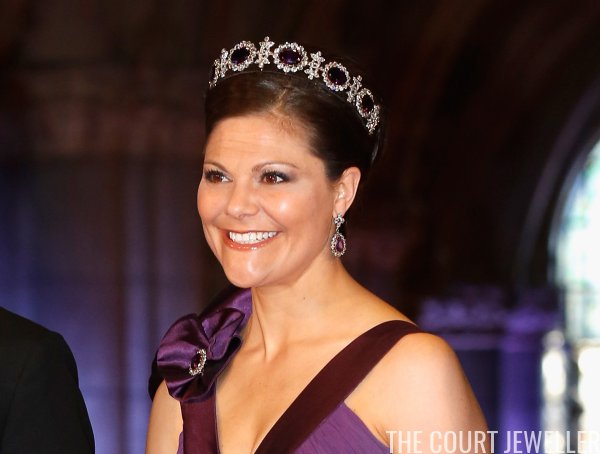 |
| Crown Princess Victoria wears the tiara in Amsterdam in 2013 (Michel Porro/Getty Images) |
Although many of the Bernadotte women have donned the tiara, it’s most often worn by the two highest ladies in the land, Queen Silvia and Crown Princess Victoria. Victoria’s appearance in the tiara during the Dutch inauguration festivities in 2013 was especially successful. Can you imagine how satisfying it must be for the Bernadotte ladies to drape themselves in royal purple stones with such an impressive heritage? Must make them feel very royal indeed!
